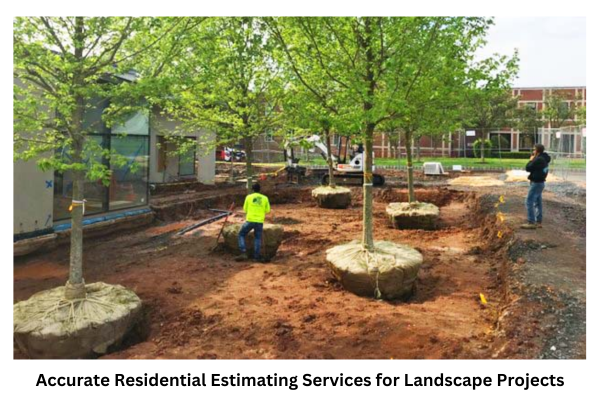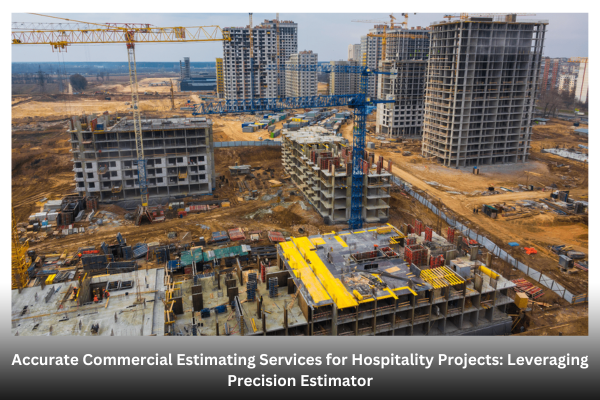In the realm of construction, infrastructure projects stand as some of the most complex and challenging undertakings. Mechanical, Electrical, and Plumbing (MEP) systems are critical components of these projects, influencing not only the functionality of structures but also their safety and energy efficiency. For precision estimators, providing reliable MEP estimating services is essential for ensuring that infrastructure projects are completed on time and within budget. This article explores the importance of reliable MEP estimating services for infrastructure projects, highlights key components of effective estimating, and outlines best practices for achieving accuracy.
The Importance of Reliable MEP Estimating
MEP systems encompass a wide range of services, including heating, ventilation, air conditioning (HVAC), electrical systems, plumbing, and fire protection. Accurate MEP estimates are crucial for several reasons:
- Budget Management: Infrastructure projects often involve substantial investments. Reliable MEP estimates enable project managers to allocate resources effectively, ensuring that all necessary components are included within the budget. This financial oversight is critical for avoiding cost overruns.
- Risk Mitigation: Infrastructure projects are inherently complex, with numerous risks associated with design, construction, and regulatory compliance. Accurate MEP estimates help identify potential challenges early, allowing project teams to implement strategies to mitigate risks.
- Timeline Adherence: Delays in MEP installation can lead to significant setbacks in project timelines. Reliable estimating allows for better scheduling of labor and materials, which is essential for maintaining overall project momentum.
- Regulatory Compliance: Infrastructure projects must adhere to local, state, and federal regulations. Accurate estimates that incorporate compliance costs ensure that projects meet legal requirements, avoiding costly fines and delays.
Key Components of Reliable MEP Estimation
To achieve reliability in MEP estimating services for infrastructure projects, precision estimators should focus on several key components:
1. Comprehensive Project Scope
Understanding the full scope of the infrastructure project is essential. This includes:
- Reviewing Project Plans: A thorough examination of architectural and engineering plans helps identify all MEP requirements. This includes analyzing layout drawings, specifications, and relevant codes.
- Stakeholder Engagement: Collaborating with architects, engineers, and project managers is vital to ensure that all MEP systems are accurately captured and defined. Regular communication helps clarify expectations and prevents misunderstandings.
2. Detailed Cost Breakdown
An effective MEP estimate should provide a comprehensive breakdown of costs, typically including:
- Materials: Identifying all necessary materials, such as ductwork, piping, electrical wiring, and fixtures, is essential for accurate estimates. Keeping abreast of current market prices ensures that estimates are reflective of actual costs.
- Labor: Estimating labor hours required for MEP installations involves assessing the complexity of the systems and the skill level of the workforce needed. This step is critical for determining labor costs accurately.
- Equipment: Costs associated with specialized equipment, such as lifts, scaffolding, and installation tools, should also be included in the estimate.
- Overhead and Profit Margins: Including overhead costs related to insurance, permits, and administrative expenses, along with a reasonable profit margin, ensures that the estimate reflects the true financial picture.
3. Quantity Takeoff
A quantity takeoff is a crucial step in the estimating process. It involves measuring and quantifying the materials needed based on project plans. This includes:
- Accurate Measurements: Estimators must ensure that all dimensions and quantities are accurately calculated. Inaccuracies in this step can lead to significant cost discrepancies.
- Consideration of Unique Features: Accounting for elements such as ductwork runs, pipe fittings, and electrical outlets helps refine the estimate and avoid omissions.
Best Practices for Reliable MEP Estimation
To enhance the reliability of MEP estimating services for infrastructure projects, precision estimators should implement the following best practices:
1. Utilize Advanced Technology
Leveraging specialized estimating software can significantly improve the estimating process. Tools like AutoCAD, Revit, and Bluebeam allow estimators to create detailed, accurate estimates while integrating with Building Information Modeling (BIM). These technologies facilitate quick calculations, easy adjustments, and detailed reporting, ultimately saving time and reducing errors.
2. Conduct Site Visits
For infrastructure projects, conducting site visits is essential for gathering accurate information about existing conditions. Estimators should assess the site to identify potential challenges, confirm measurements, and understand the project’s logistical requirements. This firsthand knowledge can lead to more precise estimates and help mitigate risks associated with unforeseen conditions.
3. Maintain Clear Communication
Effective communication with all project stakeholders is vital. Regular updates and meetings ensure that everyone is aligned on project goals and expectations, reducing the likelihood of misunderstandings. Open communication channels foster collaboration and can uncover insights that lead to more accurate estimates.
4. Analyze Historical Data
Reviewing historical data from past infrastructure projects can provide valuable insights into pricing trends and labor costs. Maintaining a database of previous estimates allows estimators to identify patterns, refine their estimating techniques, and benchmark new projects against historical performance.
5. Include Contingencies
Incorporating a contingency fund within the estimate is a prudent practice. A typical approach is to allocate a percentage of the total MEP cost (usually between 5% and 15%) to account for unexpected expenses. This contingency can cover unforeseen complications, such as changes in project scope or delays due to weather conditions.
The Role of a Professional MEP Estimator
A professional MEP estimator plays a pivotal role in the success of infrastructure projects. Their responsibilities include:
- Conducting Thorough Research: Estimators must stay informed about new materials, technologies, and industry standards. This knowledge helps them make informed decisions regarding material selection and installation techniques.
- Developing Detailed Reports: Professional estimators create comprehensive reports that outline the costs, quantities, and methodologies used in their estimates. These reports serve as valuable documentation for project stakeholders and can be essential for bid submissions.
- Building Client Relationships: Strong relationships with clients and contractors are vital. A professional estimator must communicate effectively, addressing any questions or concerns that arise during the estimating process. This communication builds trust and enhances the likelihood of securing future projects.
Future Trends in MEP Estimating
The future of MEP estimating services for infrastructure projects is shaped by several trends that are set to revolutionize the industry:
- Integration with Building Information Modeling (BIM): BIM is becoming increasingly vital in the construction industry, allowing for improved collaboration and accuracy in MEP installations. By integrating MEP estimating with BIM, estimators can visualize the entire system within the building design, identifying potential conflicts and improving coordination among trades.
- Sustainability Focus: As sustainability becomes a priority in construction, estimators will need to consider energy-efficient systems and eco-friendly materials in their estimates. This shift will require ongoing education and adaptation to new standards and practices.
- Automation and Artificial Intelligence: Advances in automation and AI are poised to streamline the estimating process further. These technologies can assist in data analysis, enabling estimators to focus on strategic decision-making rather than manual calculations. AI can also predict pricing trends based on historical data, enhancing the accuracy of estimates.
Conclusion
Reliable MEP estimating services are essential for the successful execution of infrastructure projects. By providing accurate and detailed estimates, precision estimator contribute to effective budget management, risk mitigation, and streamlined project planning. Focusing on comprehensive project scopes, detailed cost breakdowns, and implementing best practices can enhance the reliability of estimates. As the construction industry continues to evolve, staying informed about new trends and technologies will ensure that professional estimators remain invaluable partners in delivering successful infrastructure projects. Ultimately, reliable MEP estimating not only protects project profitability but also fosters long-term relationships with clients and stakeholders, paving the way for future opportunities in the construction sector.or more information visits our social accounts Facebook, Instagram, Twitter, and Linkedin.


